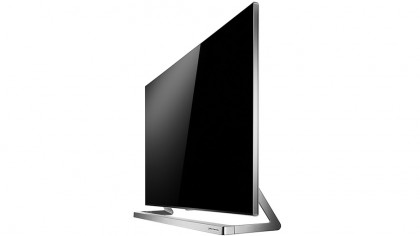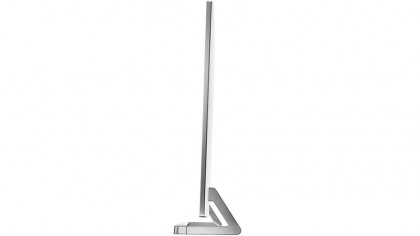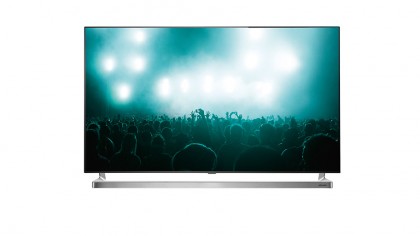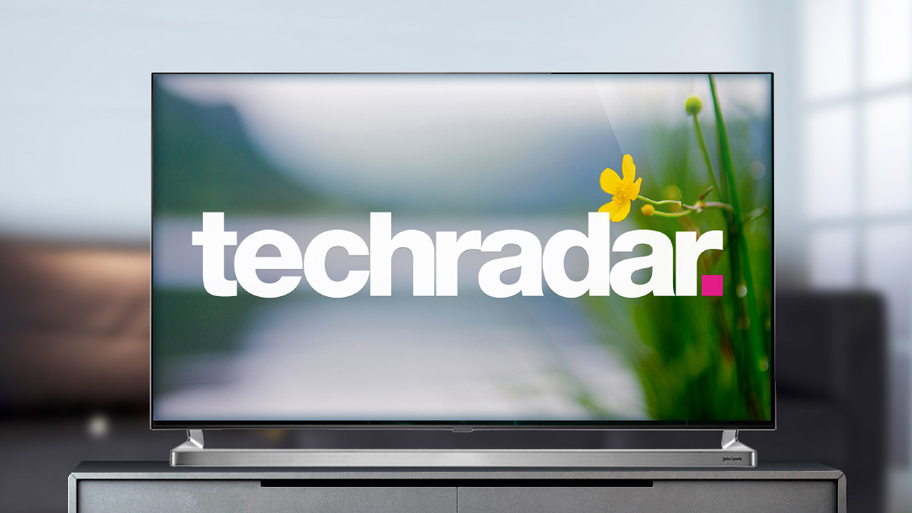Why you can trust TechRadar
As soon as I discovered that the 55JL9000 uses an IPS LCD panel I was worried about its picture quality, based on the fact that IPS panels have traditionally struggled to produce convincing black levels.
However, while some of my concerns prove justified, overall the John Lewis debutante gets enough things right to just about win me to its cause.
Let's get the most significant bad news out of the way first. Which centres, as I'd predicted, around the set's contrast performance.
Black level flaws
It's a pretty well-established fact now that IPS LCD panels struggle to deliver contrast – or more specifically, black levels – as well as rival LCD technologies, and the 55JL9000 can't break free of this shackle. Turn off all the provided contrast-boosting tools, for instance, and dark scenes look like they're appearing behind through a fairly thick grey mist. Not ideal.
Thankfully, calling into play the black level booster and local dimming tools improves things hugely, reducing the grey 'wash' problem to a fraction of what it is if you rely on the TV's 'native' contrast performance. So it's song and dance time, right? Not quite.

The thing is, the black level booster and local dimming systems are having to work so aggressively to fight the 55JL9000's lack of native contrast that sometimes you become overly aware of what they're up to. For instance, you often feel like the darkest parts of pictures are looking rather hollow, thanks to the way shadow detail is lost as the 55JL9000 set removes too much brightness from the image in its bid to deliver a credible black colour.
Blocks of light
You also sometimes see blocks of light extending right the way down the screen when the TV has to try to show a bright object against a dark backdrop.
You can, thankfully, reduce the impact of this latter issue by reducing the set's backlight setting heavily from the starting point established by most of its picture presets. But you won't be able to dismiss the light bars completely unless you remove so much brightness that pictures are no longer enjoyable to watch. And of course, reducing the screen's luminance doesn't exactly help with the shadow detail issue.
So why do I still like the 55JL9000? Well, for starters the black level shortcomings I've talked about are only strongly apparent if you're watching the set in a very dark room. In 'normal' viewing conditions the ambient light levels in your room do a good job of disguising the contrast shortage.
Impressive colour
The 55JL9000 also looks at times explosively good with predominantly bright footage – the sort of footage that actually makes up the majority of a typical household's viewing time. The set's innate brightness levels are extreme (even after significantly reducing the backlight output to help with black level response) and this helps the John Lewis TV push colours forth with startling dynamism. This trait again goes a long way under many viewing conditions to disguising the set's black level flaws.
What's particularly great about the 55JL9000's colour richness, though, is that it's accompanied by a very wide colour range, impressive deftness with colour blend reproduction, and possibly the most natural colour tones we've seen from the 55JL9000's source LG stable. Skin tones in particular look much more credible and 'human' than they've tended to on past generations of LG TV.

It's great to note, too, that the 55JL9000's processing power helps it deliver some very effective upscaling of the standard definition sources you sometimes still have to put up with. Particularly welcome is the way upscaled pictures maintain more or less the same colour accuracy as HD sources, something that again was once an issue with LG TVs.
Strong sharpness and detailing
IPS panels haven't always delivered the sharpest pictures. But good quality HD sources actually look pristine on the 55JL9000, with excellent detailing and texture (except where there's evidence of black crushing). There's a touch more motion blur than I've seen with one or two high-end rivals, but it's not a big deal.
LG's motion processing is capable enough on its lowest power level to warrant experimentation if you want to reduce the blurring. Be warned, though, that at higher power settings LG's motion processing can fall prey to some fairly distinct processing glitches.
The 55JL9000 delivers on the much-vaunted IPS panel benefit of slightly wider effective viewing angles. Or at least this is true during bright scenes. With dark content, watching from down the TV's sides tends to greatly exaggerate the light banding problems created by the local dimming engine.

Turning finally to the 55JL9000's 3D pictures, I fired up the test discs with a degree of trepidation, with the ghostly horror shows of one or two other 3D LG TVs this year still giving us nightmares. Thankfully, though, the 55JL9000 enjoys a clean bill of 3D health. In fact, its 3D images are so clean, relaxing, colourful, bright and free of both ghosting and flicker that they're arguably the star of its picture quality show.
Any good for gaming?
While the 55JL9000's pictures are good enough on balance to make it an enjoyable TV, though, the sample I tested was more problematic as a gaming monitor. My tests showed it takes in excess of 100ms to render images after receiving image data at its inputs. This is more than three times as high a figure as I'd ideally like to see, and will affect your performance with reaction-based games. Which most are, when you come down to it.
John has been writing about home entertainment technology for more than two decades - an especially impressive feat considering he still claims to only be 35 years old (yeah, right). In that time he’s reviewed hundreds if not thousands of TVs, projectors and speakers, and spent frankly far too long sitting by himself in a dark room.

